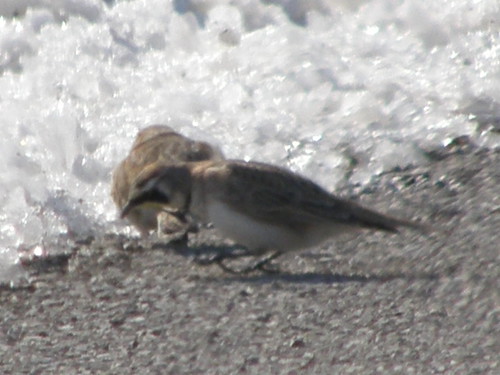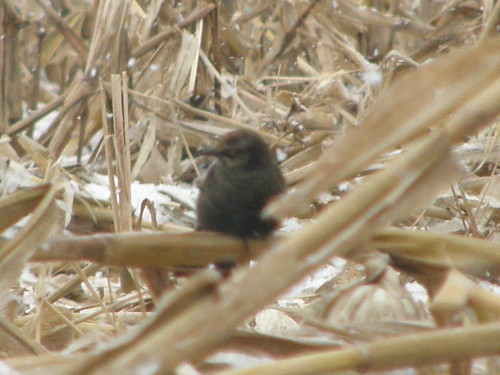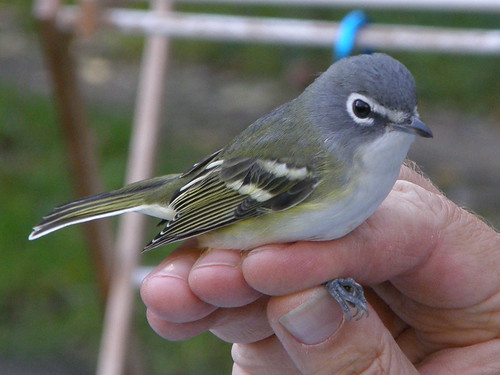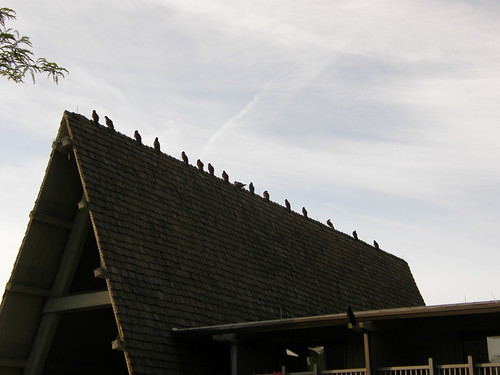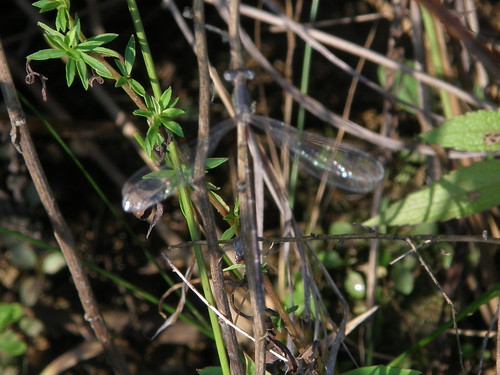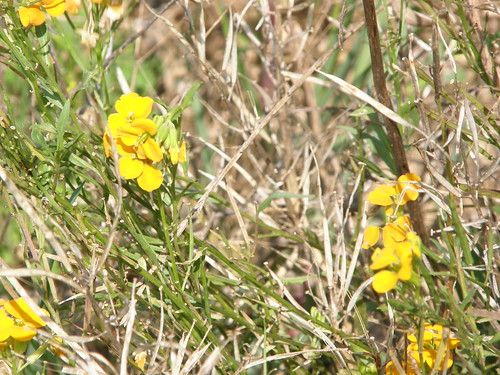 Sparrows as a group were the most numerous birds, breaking many of my previous all time highs for the yard. I had 15 Eastern Towhees (tie), 38 American Tree Sparrows (record), 35 White-throated Sparrows(record), 8 Dark-eyed Juncos, 1 Fox Sparrow, and 8 Song Sparrows (record) *Highest # counted at one time, per the GBBC rules
Sparrows as a group were the most numerous birds, breaking many of my previous all time highs for the yard. I had 15 Eastern Towhees (tie), 38 American Tree Sparrows (record), 35 White-throated Sparrows(record), 8 Dark-eyed Juncos, 1 Fox Sparrow, and 8 Song Sparrows (record) *Highest # counted at one time, per the GBBC rules The new 1 foot of snow on Presidents Day brought in more good birds, including 10 Brown-headed Cowbirds and 1 male Eastern Bluebird. The birds were fighting for the feeders and I even had a male towhee try to stay on the feeder as I was trying to fill it. He made an odd squealing sound as I approached him.
The new 1 foot of snow on Presidents Day brought in more good birds, including 10 Brown-headed Cowbirds and 1 male Eastern Bluebird. The birds were fighting for the feeders and I even had a male towhee try to stay on the feeder as I was trying to fill it. He made an odd squealing sound as I approached him.Wasn't able to get all of my expected woodpeckers, but was surprised by a brief sighting of a Red-headed Woodpecker that was down the street (flew over yard, but didn't stop at feeders). Broke my all time high for the yard for Red-bellies (8 at one time).
 Somehow I managed to miss my resident Red-shoulder that I had seen the day before the count. I did get feeder raids by both expected accipters though. Also had flyovers of a Red tail, 1 Turkey Vulture and 3 Black Vultures. Was able to call in an Eastern Screech-owl at dusk. The Great-horned was heard calling from the big woods across the street at dusk while filling feeders.
Somehow I managed to miss my resident Red-shoulder that I had seen the day before the count. I did get feeder raids by both expected accipters though. Also had flyovers of a Red tail, 1 Turkey Vulture and 3 Black Vultures. Was able to call in an Eastern Screech-owl at dusk. The Great-horned was heard calling from the big woods across the street at dusk while filling feeders.Complete species list for weekend:
Black Vulture
Turkey Vulture
Sharp-shinned Hawk
Cooper's Hawk
Red-tailed Hawk
Mourning Dove
Eastern Screech-Owl
Great Horned Owl
Red-headed Woodpecker
Black Vulture
Turkey Vulture
Sharp-shinned Hawk
Cooper's Hawk
Red-tailed Hawk
Mourning Dove
Eastern Screech-Owl
Great Horned Owl
Red-headed Woodpecker
Red-bellied Woodpecker
Downy Woodpecker
Hairy Woodpecker
Northern Flicker
Blue Jay
American Crow
Carolina Chickadee
Tufted Titmouse
White-breasted Nuthatch
Carolina Wren
Eastern Bluebird
American Robin
European Starling
Eastern Towhee
American Tree Sparrow
Fox Sparrow
Song Sparrow
White-throated Sparrow
Dark-eyed Junco
Northern Cardinal
Common Grackle
Brown-headed Cowbird
House Finch
American Goldfinch
House Sparrow
I had 34 species seen or heard in or from my yard for all 4 days combined.

Downy Woodpecker
Hairy Woodpecker
Northern Flicker
Blue Jay
American Crow
Carolina Chickadee
Tufted Titmouse
White-breasted Nuthatch
Carolina Wren
Eastern Bluebird
American Robin
European Starling
Eastern Towhee
American Tree Sparrow
Fox Sparrow
Song Sparrow
White-throated Sparrow
Dark-eyed Junco
Northern Cardinal
Common Grackle
Brown-headed Cowbird
House Finch
American Goldfinch
House Sparrow
I had 34 species seen or heard in or from my yard for all 4 days combined.

